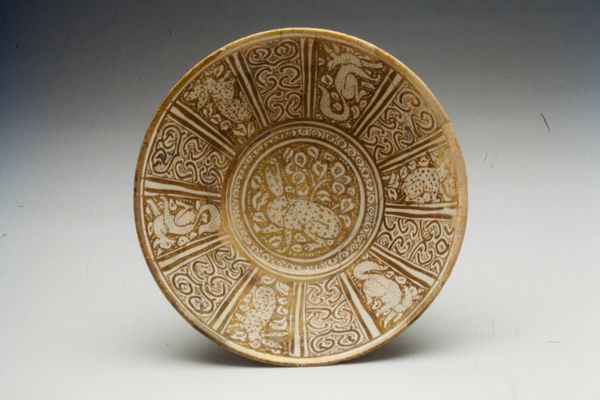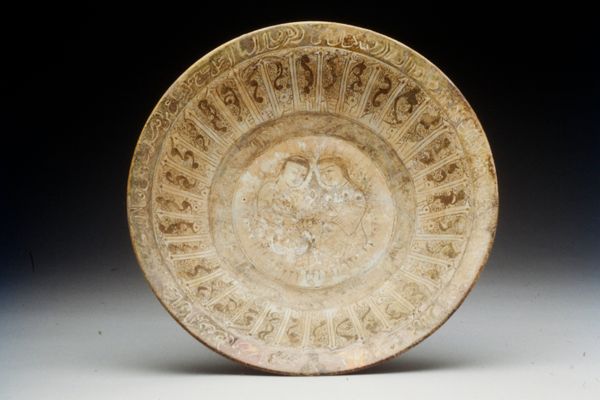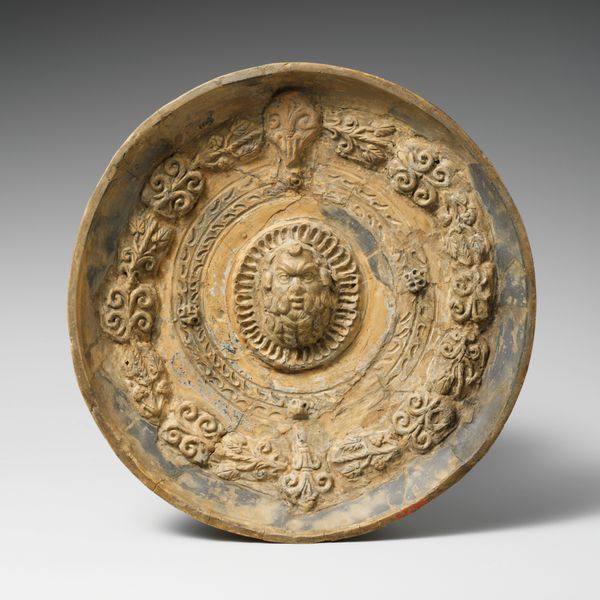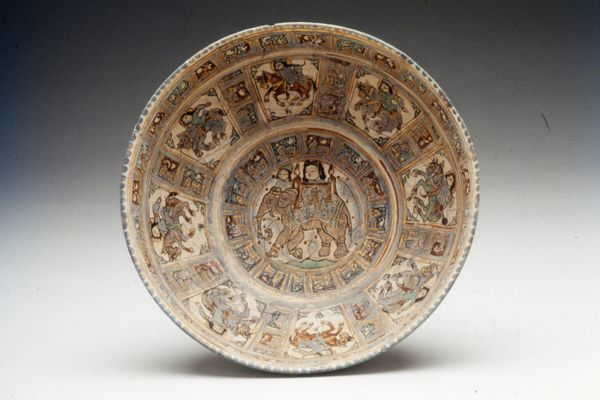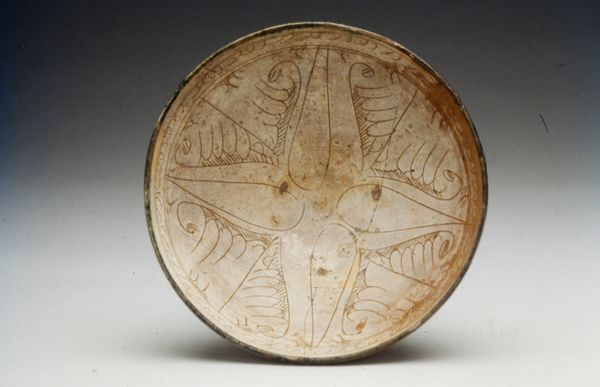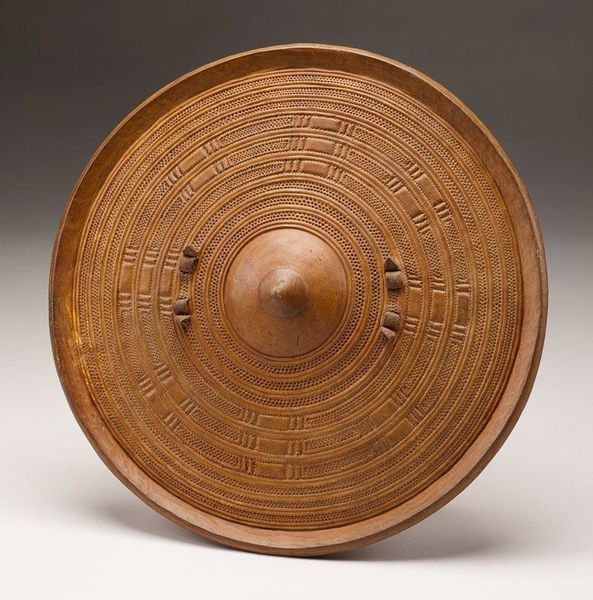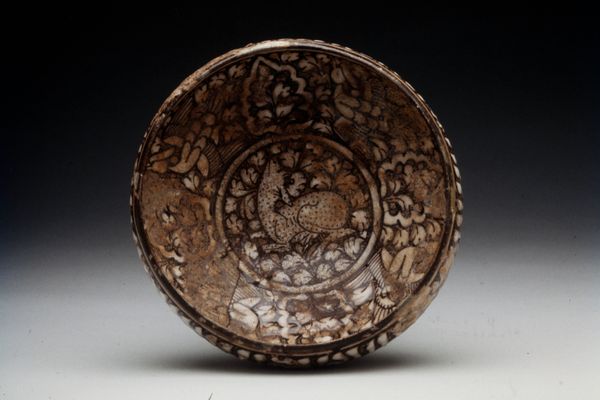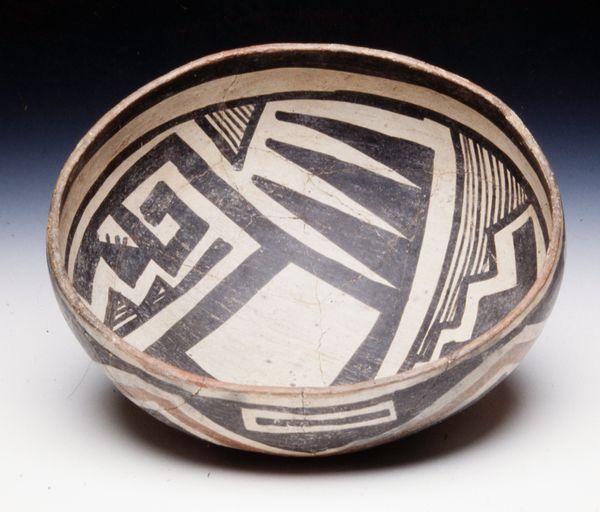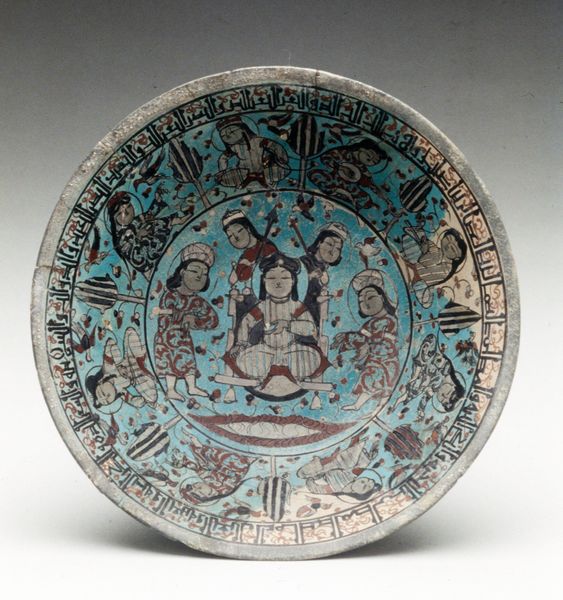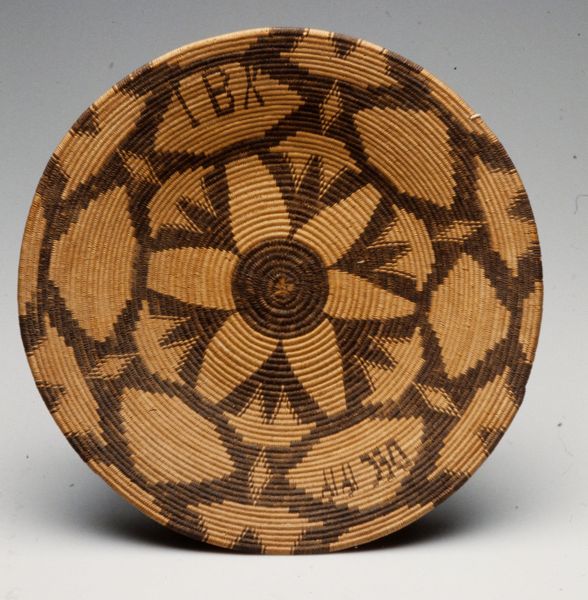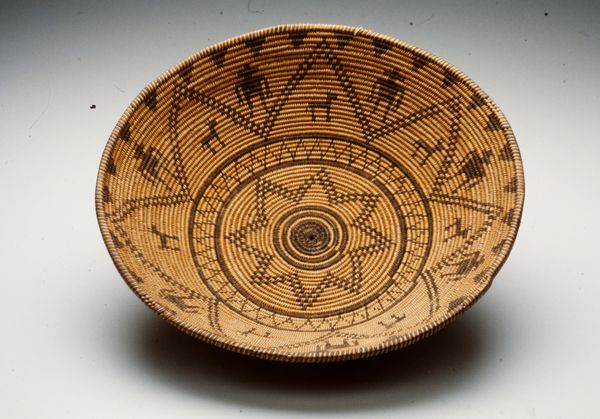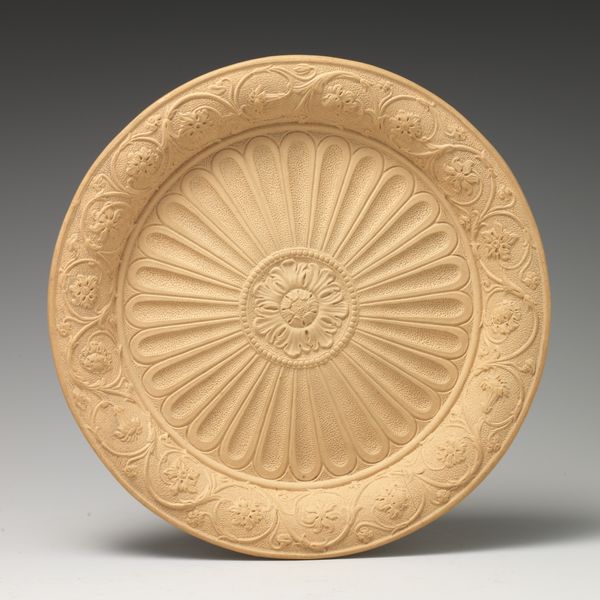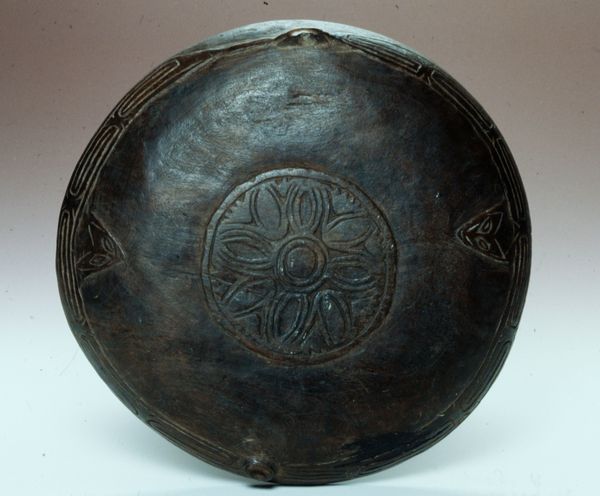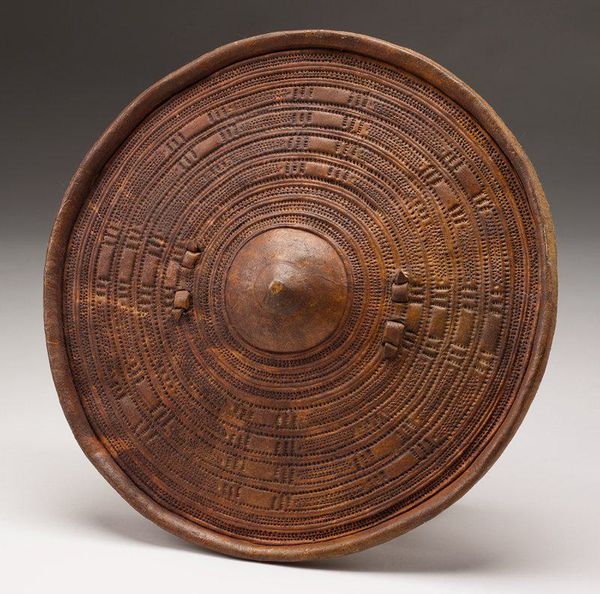
ceramic, earthenware
#
ceramic
#
earthenware
#
stoneware
#
ancient-mediterranean
#
ceramic
#
islamic-art
#
decorative-art
Copyright: Public Domain
Curator: This is "Deep Basin," an earthenware bowl crafted after 1450 by an anonymous artist. Editor: It has such a muted tone, a gentle golden brown. The pattern radiating from the center almost hypnotic in its complexity. Curator: These types of basins, crafted from ceramic and sometimes stoneware, played a key role in Islamic art and culture, specifically as decorative and functional items within households of the time. Its very design, incorporating geometric and vegetal motifs, speak to the symbolic richness embedded within the era. Editor: You can really feel that in the detail. Notice how each petal or section holds its own micro-ornamentation. It is fascinating how so much variety can emerge in such a structured framework. I feel its impact hinges on the contrasting depths in each of those shapes and textures. Curator: Yes, but it is also interesting to observe the social context within which an artwork like this emerged; a rising mercantile class probably influenced a great demand for ornamental objects in the domestic space. These objects would act not only as aesthetically pleasing objects but also symbols of status. Editor: That adds another dimension to viewing it. The central motif certainly seems designed to draw attention. Was this made for practical use or purely for decoration? Curator: It's plausible that this served a practical use, though its condition suggests it was cherished, perhaps displayed prominently as an indicator of refinement and taste. The history of collecting is as important as the purpose itself. Editor: Knowing that shapes my experience now, I appreciate it for what it signified beyond utility, how even common materials can convey rich narratives. Curator: Precisely. And considering how these ceramics circulated across regions, we understand not just the history of one basin but networks of trade and exchange, and a much wider picture of cross-cultural dialogue. Editor: That gives me a lot to consider regarding the intricate interplay between decoration, function, value, and widespread distribution and collection of artwork, thanks!
Comments
minneapolisinstituteofart almost 2 years ago
⋮
This deep, round basin with dense, curvilinear decoration was made in the thriving ceramic center of Manises in the Valencia region of Spain. There, the master potters were Mudéjars, Muslim residents who remained in the Iberian Peninsula (present-day Spain and Portugal) after the collapse of the Umayyad dynasty (756-1031 CE) and retained a monopoly on the complex lustreware ceramic technique. Their wares were sought after by noble and royal houses throughout Europe, evidenced by this commission, with the coat of arms symbolizing the union of the Catholic Kingdoms of Aragon and Sicily.
Join the conversation
Join millions of artists and users on Artera today and experience the ultimate creative platform.
